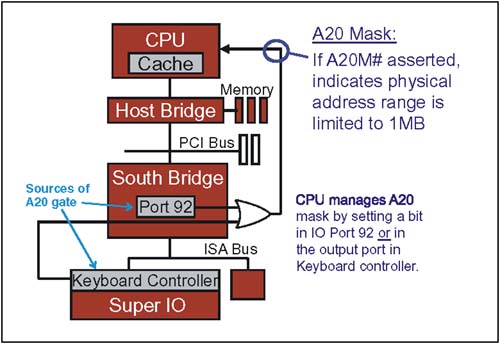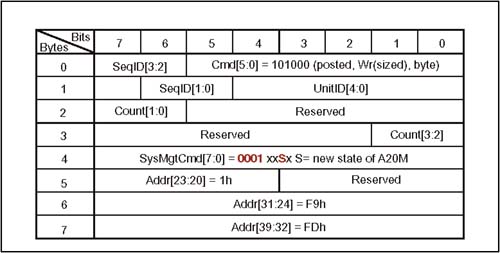The A20 Mask
| The A20M# input forces the processor to emulate the address wrap-around at the 1MB boundary that occurs on the 8086/8088 processors. This pin should only be asserted by external logic (under software control) when the microprocessor is in Real Mode. The x86 microprocessors mask physical address bit 20 (forces it to a zero) before performing a lookup to the internal cache or driving a memory bus cycle onto the buses. For additional information, see MindShare's ISA System Architecture book, published by Addison-Wesley. The Legacy Method of Signaling A20M#Figure 22-13 illustrates the legacy method of signaling A20 Mask to the processor, along with methods that software has to change the A20M# signal state:
Figure 22-13. Legacy A20 Mask Signal The HT Method of Signaling A20M#The System Management Controller delivers state changes associated with the A20M# signal via SM Requests to the Host Bridge, which in turn delivers the change to the processor via the physical A20M# signal. Figure 22-14 illustrates this mechanism and Figure 22-15 on page 511 illustrates the contents of the SM request packet, including the value used in the SysMgtCmd field. Figure 22-14. HT A20M# Delivery Figure 22-15. Format and Contents of the A20M SM Request Packet |
EAN: 2147483647
Pages: 182


